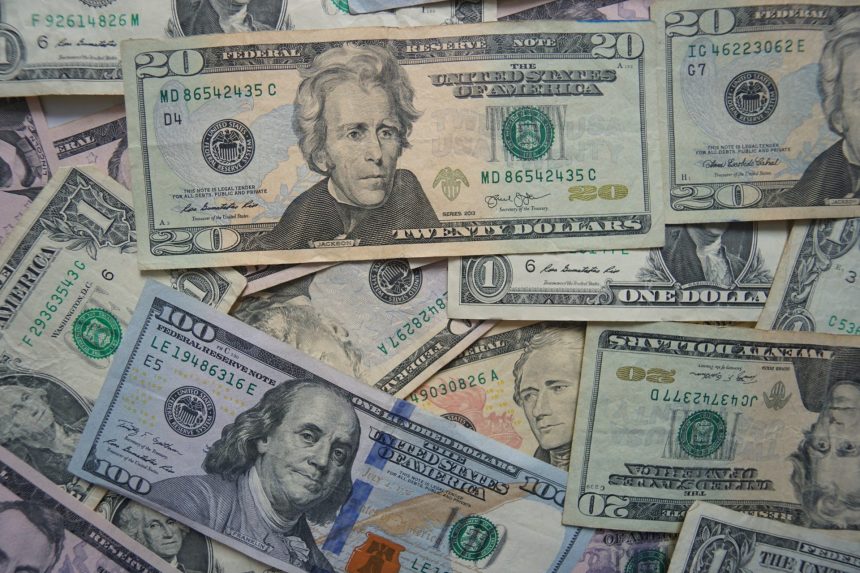The Federal Reserve has recently sent signals regarding the reduction in the need to raise interest rates due to the increase in long-term Treasury yields. This move by the Fed reflects its cautious approach towards taming inflation while keeping the door open for possible future rate hikes. Chair Jerome Powell has indicated that a decision on raising rates could be made at the next meeting, but also acknowledged that the Fed may have completed its tightening campaign. The central bank is still evaluating whether the current monetary policy is restrictive enough to bring inflation back to its desired target of 2%.
Impact of Yield Rise on Interest Rates
The recent rise in long-term Treasury yields has played a significant role in shaping the Fed’s stance on interest rates. By signaling that the increase in yields reduces the impetus to raise rates, the central bank is taking into account the impact of market forces on the economy. The rise in yields indicates that borrowing costs for businesses and consumers are already increasing, thereby tightening financial conditions. This has led the Fed to reconsider the necessity of further rate hikes, as it aims to strike a balance between controlling inflation and supporting economic growth.
Powell’s Mixed Signals
While Chair Jerome Powell has left the possibility of a rate hike open, he has also expressed caution and uncertainty regarding the need for further tightening. Powell’s mixed signals reflect the complexity of the current economic landscape and the challenges faced by the central bank in managing inflationary pressures. While the Fed has been proactive in raising rates to prevent the economy from overheating, it is also mindful of the potential negative consequences of overly aggressive tightening. Powell’s cautious approach underscores the Fed’s commitment to data-driven decision-making and its willingness to adjust its policies as needed.
Evaluating Monetary Policy’s Impact on Inflation
One of the key considerations for the Federal Reserve is evaluating the impact of monetary policy on inflation. The central bank’s target inflation rate of 2% serves as a benchmark for its policy decisions. While the Fed has been successful in keeping inflation relatively low in recent years, achieving the desired target has proven to be challenging. Powell has stated that he is not yet confident in judging whether the current monetary policy is restrictive enough to bring inflation back to the 2% target. This indicates that the Fed is closely monitoring inflationary pressures and is willing to make adjustments to its policy if necessary.
The Role of the Next Meeting
The upcoming meeting of the Federal Reserve will play a crucial role in determining the future course of interest rates. Powell has indicated that a decision on raising rates could be made at this meeting, depending on the evaluation of economic data and market conditions. The central bank will assess various factors, including inflation trends, employment data, and financial market stability, to determine whether further tightening is necessary. The outcome of the meeting will provide insights into the Fed’s strategy for balancing its dual mandate of price stability and maximum employment.
Market Reaction to the Fed’s Signals
The market reaction to the Fed’s signals regarding interest rates and inflation has been mixed. While some investors have welcomed the central bank’s cautious approach, others have expressed concerns about the potential for a policy misstep. The uncertainty surrounding future rate hikes and the Fed’s assessment of inflationary pressures have led to increased volatility in the financial markets. Investors are closely monitoring economic indicators and central bank communications for insights into the future direction of interest rates.
Potential Implications for Businesses and Consumers
The Fed’s decision on interest rates has implications for businesses and consumers alike. Higher interest rates can increase borrowing costs for businesses, potentially impacting investment decisions and overall economic growth. For consumers, higher interest rates can make borrowing more expensive, affecting mortgage rates, credit card rates, and other forms of debt. The Fed’s cautious approach to rate hikes aims to strike a balance between controlling inflation and supporting economic activity. By carefully evaluating the impact of monetary policy on businesses and consumers, the central bank seeks to maintain a stable and sustainable economic environment.
See first source: Bloomberg
FAQ
What has the Federal Reserve signaled regarding interest rates?
The Federal Reserve has signaled a reduction in the need to raise interest rates due to the increase in long-term Treasury yields, with a cautious approach towards inflation.
How has the rise in long-term Treasury yields impacted the Fed’s stance on interest rates?
The rise in yields signifies higher borrowing costs, which has led the Fed to reconsider further rate hikes to balance controlling inflation and supporting economic growth.
What has Chair Jerome Powell indicated about future rate hikes?
Powell has left the possibility of a rate hike open for the next meeting, yet also acknowledged that the Fed might have completed its tightening campaign.
How is the Fed evaluating the impact of monetary policy on inflation?
The Fed is closely monitoring inflationary pressures and is willing to adjust its policy to bring inflation back to the desired target of 2%.
What role will the upcoming Federal Reserve meeting play in determining interest rates?
The meeting will assess various economic factors to decide on rate hikes, with the outcome providing insights into the Fed’s strategy for price stability and maximum employment.
How have the markets reacted to the Fed’s signals?
The market reaction has been mixed with some welcoming the cautious approach, while others are concerned about potential policy missteps, leading to increased financial market volatility.
What are the potential implications of the Fed’s decision on interest rates for businesses and consumers?
Higher interest rates can increase borrowing costs, impacting investment decisions for businesses and making borrowing more expensive for consumers, affecting overall economic growth.
How does the Fed plan to maintain a balance between controlling inflation and supporting economic activity?
The Fed aims to maintain this balance by carefully evaluating the impact of monetary policy on businesses and consumers to ensure a stable and sustainable economic environment.
What is the Fed’s target inflation rate and how does it influence policy decisions?
The target inflation rate is 2%, serving as a benchmark for policy decisions. Achieving this target has been challenging, prompting continuous evaluation and potential policy adjustments.
Featured Image Credit: Photo by Blogging Guide; Unsplash – Thank you!







